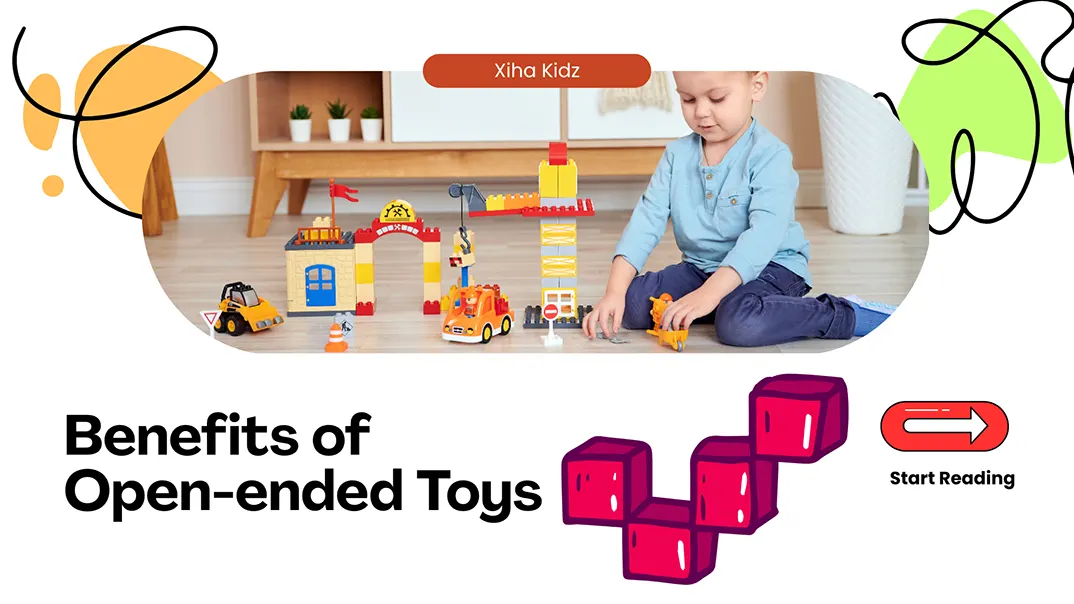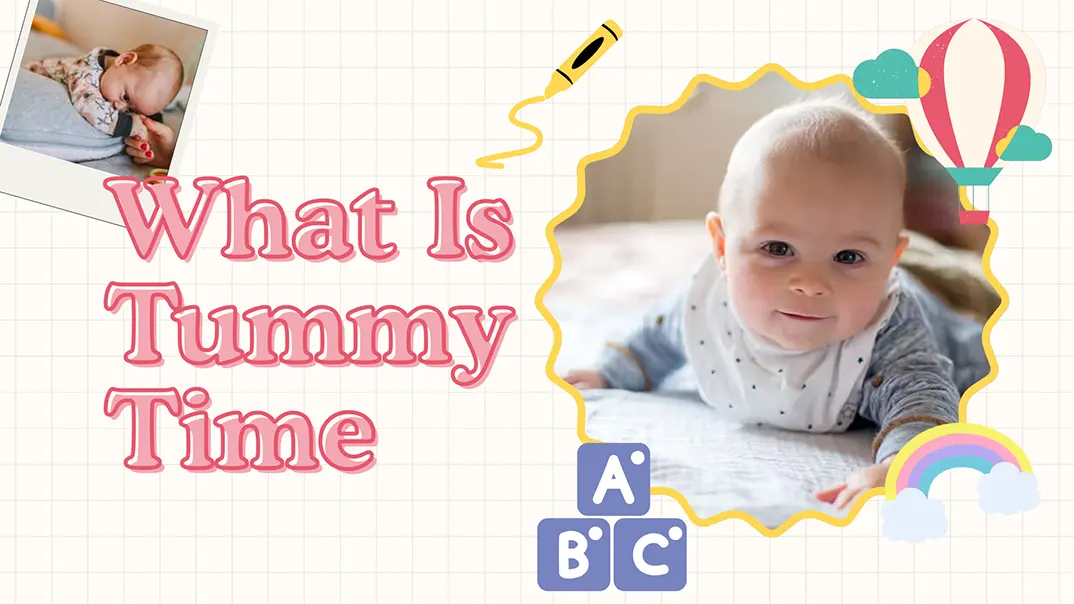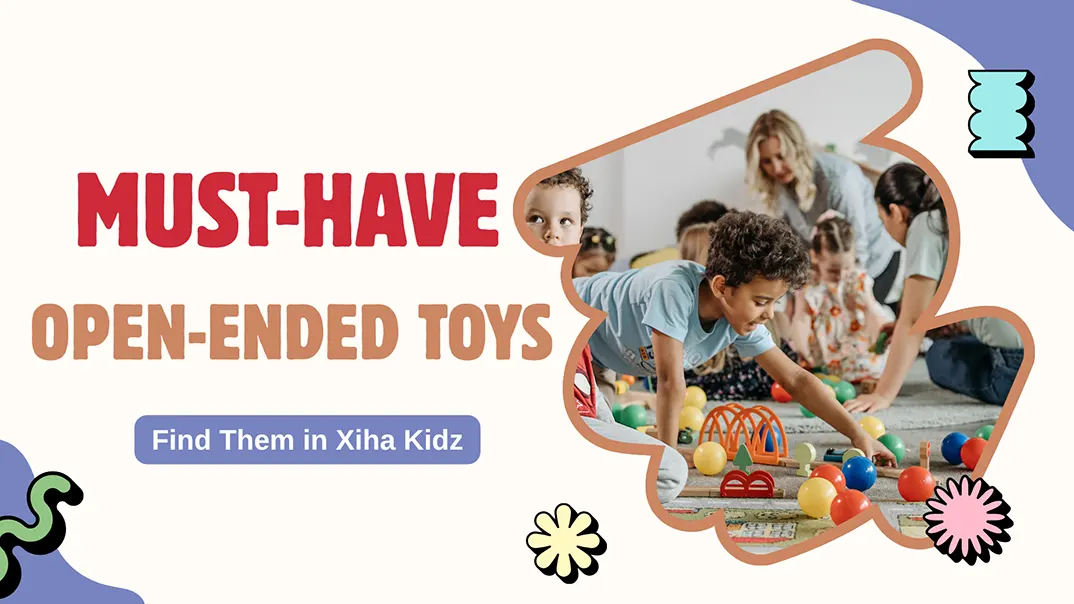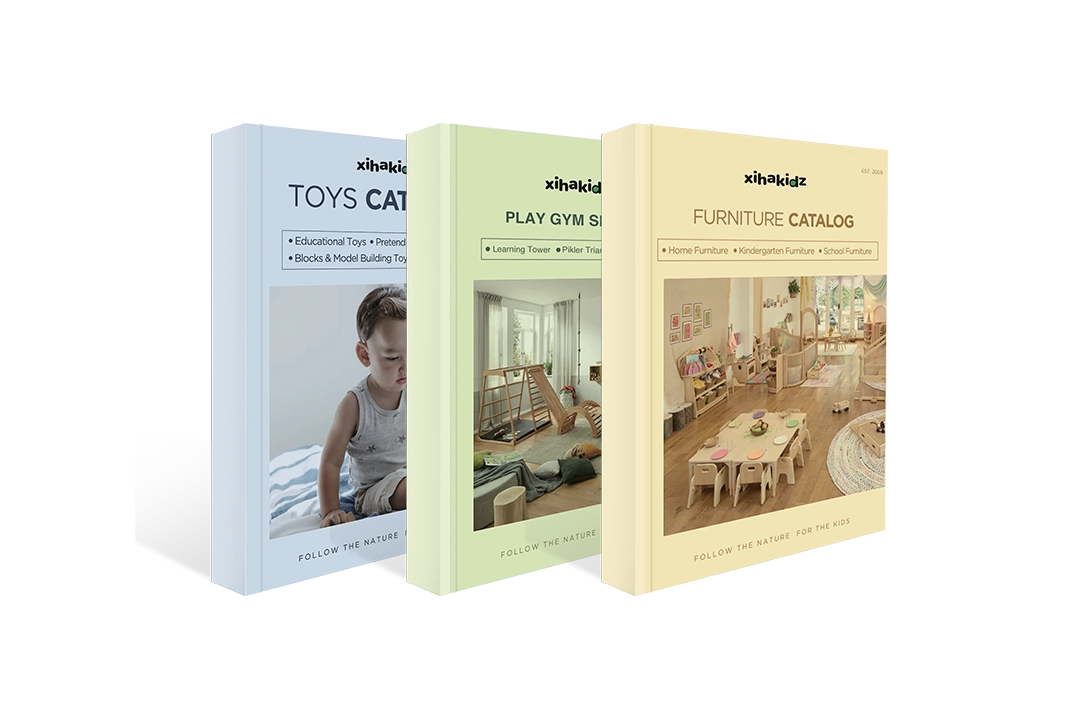Have you ever watched a child turn a cardboard box into a spaceship, or a few wooden blocks into a zoo? That is the magic of open-ended play. When children are given toys without fixed instructions or goals, their imagination takes over.
Open-ended toys let kids decide what the toy becomes and how it is used. This simple shift gives them more control, more creativity, and more room to grow. The benefits of open-ended toys go far beyond fun. They support thinking, problem-solving, and emotional development in ways that traditional toys often cannot.
As the educator Maria Montessori once said, “Play is the work of the child.” The right toys support that work in meaningful, lasting ways. Let’s look at the benefits of open-ended toys and how to choose the right ones for different ages.
What Are Open-ended Toys?
Open-ended toys are play materials that do not have a fixed purpose or a single correct way to use them. Unlike toys that come with buttons, sounds, or pre-set goals, open-ended toys invite children to explore, imagine, and create their own ideas through play. These toys allow for multiple outcomes, which means a child’s creativity and curiosity shape the direction of play every time.
A set of wooden blocks, for example, can become a castle, a zoo, or a city depending on the child’s imagination. Play silks can transform into costumes, landscapes, or props for storytelling. Loose parts such as shells, sticks, or fabric scraps can turn into anything a child dreams up. Because there are no instructions, children learn to think independently, make decisions, and solve problems through experimentation.
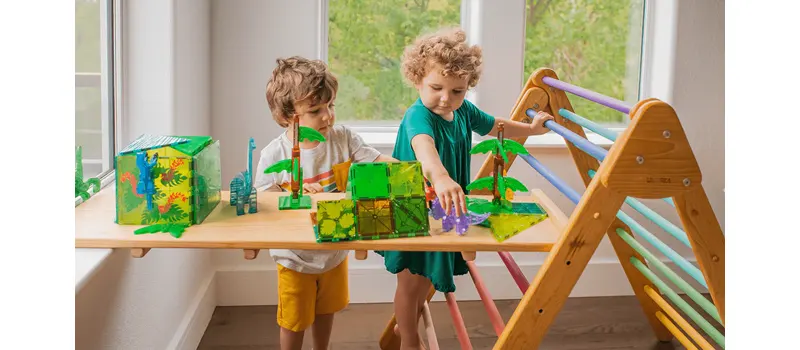
Key Characteristics of Open-ended Toys
Open-ended toys are designed to encourage imagination and flexible thinking. Their main strength lies in their ability to invite endless possibilities rather than direct children toward one correct answer. The following are the most important characteristics that define open-ended toys:
- Multiple Uses and Outcomes
Each toy can be used in countless ways. A single set of wooden blocks can serve as building materials, storytelling props, or even tools for early math concepts. The open structure allows creativity to flow without limits. - No Fixed Instructions
Open-ended toys come without manuals or specific steps. Children are free to decide how to play, which helps them build independence and problem-solving skills through trial and error. - Encouragement of Creativity and Imagination
These toys stimulate the creative mind. A plain silk scarf may become a superhero cape one day and a river or a tent the next. Every play session can lead to new discoveries. - Adaptability Across Ages
A well-chosen open-ended toy remains interesting over the years. Toddlers may stack or sort objects, while older children use the same materials to build complex structures or role-play scenarios. - Use of Natural or Simple Materials
Many open-ended toys are made from wood, fabric, or other tactile materials that invite sensory exploration. Their simplicity keeps attention on the child’s ideas rather than on electronic features. - Focus on Process Rather Than Product
The goal is not to complete a task or reach a final design but to enjoy the process of discovery. Children learn persistence, cooperation, and flexibility as they play and experiment.
Verwandeln Sie Ihr Klassenzimmer mit individuellen Möbellösungen
Benefits of Open-ended Toys
Open-ended toys offer far more than entertainment. They are powerful tools that nurture creativity, confidence, and lifelong learning habits. Here are the most significant benefits of open-ended toys for children’s development:
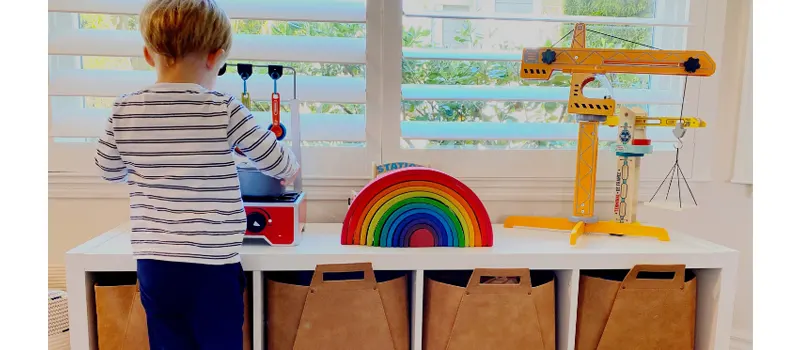
1. Promote Creativity and Imagination
Open-ended toys invite children to invent their own stories, structures, and solutions. Since there are no predefined rules, play becomes an act of imagination. Children are free to decide what something becomes, which helps build originality and flexible thinking. A set of plain wooden figures might become a family, a group of zoo animals, or characters in a made-up story. The same toys take on new roles depending on the child’s ideas, not the manufacturer’s instructions.
2. Encourage Problem Solving and Critical Thinking
When children decide how to use materials, they learn to make plans, test ideas, and adjust when something does not work. Balancing blocks, constructing towers, or creating pretend worlds strengthens reasoning and decision-making abilities. For example, building a tall tower that keeps falling prompts them to figure out a more stable base. They try, observe, and adjust, gaining logical thinking skills with every attempt.
3. Support Language and Communication Skills
Through imaginative play, children naturally develop richer vocabulary and storytelling skills. They discuss roles, explain their ideas, and cooperate with others, which enhances both expressive and receptive language abilities. Two kids pretending to run a bakery with felt pieces and blocks might take orders, name their pastries, and tell stories about customers, all while developing real conversational skills.
4. Develop Fine and Gross Motor Skills
Manipulating small parts, stacking blocks, or arranging loose materials improves coordination, balance, and hand control. The physical movement involved in building or pretending supports overall motor development. Whether a child is stringing large beads, scooping sand into containers, or balancing blocks to form a bridge, these simple actions help refine both fine and gross motor skills in a way that feels natural and enjoyable.
5. Build Social and Emotional Growth
Open-ended play often happens in groups, helping children learn to share, take turns, and collaborate. It also provides a safe space for emotional expression and self-regulation as children act out experiences or feelings. For example, children pretending to run a vet clinic might take care of a sick stuffed animal, showing concern, offering comfort, and working together to decide what the animal needs, all while processing their own thoughts and emotions.
6. Encourage Independent and Sustained Play
Because open-ended toys engage the imagination deeply, children can play for long periods without adult direction. This independence fosters concentration, persistence, and confidence in their own abilities. A preschooler with a tray of loose parts may spend 45 minutes quietly building a landscape, completely immersed in their own creative process.
7. Grow with the Child Over Time
A key advantage of open-ended toys is their long-term value. The same set of toys can be reimagined differently as a child’s understanding evolves, providing years of meaningful play rather than short-lived excitement. Play silks might be used as peekaboo cloths for a baby, capes or tents for a preschooler, and costume accessories for a seven-year-old’s performance. One toy, many possibilities.
Open-ended vs. Closed-ended Toys: What’s the Difference?
Understanding the difference between open-ended and closed-ended toys is key to making smart choices that support your child’s development. These two categories of toys offer very different types of play experiences, and each plays a distinct role in learning and growth.
| Besonderheit | Open-ended Toys | Closed-ended Toys |
|---|---|---|
| Zweck | No fixed goal; encourages exploration and imagination | Has a specific goal or task to complete |
| Play Outcome | Unlimited possibilities; each play session can be different | One correct answer or predefined result |
| Child’s Role | Creator, inventor, storyteller | Follower, task solver |
| Beispiele | Wooden blocks, pretend kitchens, magnetic tiles | Puzzles, shape sorters, electronic toys with buttons |
| Skill Focus | Creativity, problem-solving, collaboration | Memory, recognition, task completion |
| Longevity | Grows with the child; used in many ways over the years | Often quickly outgrown once the goal is achieved |
Open-ended Toys for Different Ages
Children’s developmental needs change quickly, and the right open-ended toys can grow with them. Each stage of early childhood benefits from different materials that encourage creativity, independence, and problem-solving. Choosing toys suited to a child’s age helps keep play both engaging and educational.
For Infants (0–12 months)
At this stage, babies are just beginning to understand how their bodies connect with the world around them. Open-ended toys that crinkle, roll, or can be gently chewed give them a safe way to explore textures, sounds, and movement. These early sensory experiences lay the foundation for motor development and curiosity.
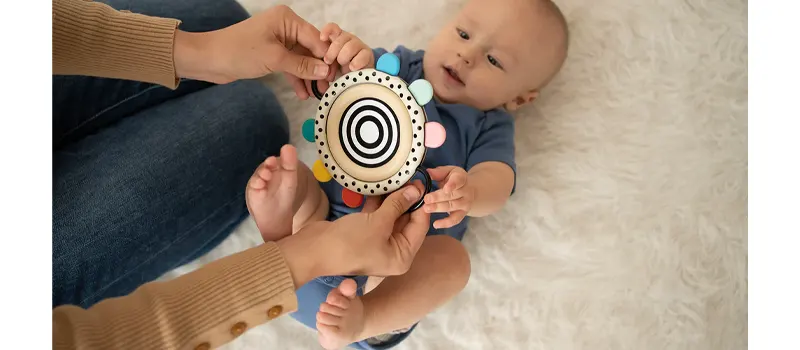
Recommended Toys:
- Soft fabric squares
- Silicone stacking rings
- Rattles
- Large wooden balls
- Sensory cloth books
Verwandeln Sie Ihr Klassenzimmer mit individuellen Möbellösungen
For Toddlers (1–3 years)
Toddlers are always on the move and love figuring out how things work. Open-ended toys allow them to stack, carry, dump, or pretend at all the things they naturally enjoy doing. These activities help them practice coordination, build early problem-solving skills, and gain confidence as they act independently.
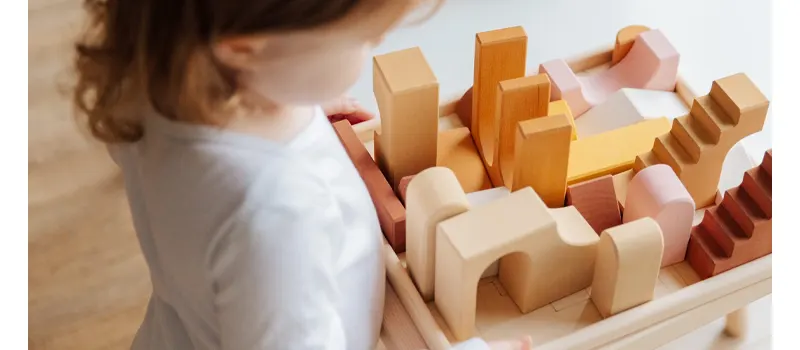
Recommended Toys:
- Wooden building blocks
- Nesting cups
- Play silks
- Large loose parts
- Simple puzzles
For Preschoolers (3–5 years)
Preschoolers are full of imagination and start to create their own stories during play. Open-ended toys give them the freedom to take on roles, build make-believe worlds, and express ideas. This kind of play strengthens creativity, language development, and social interaction with others.
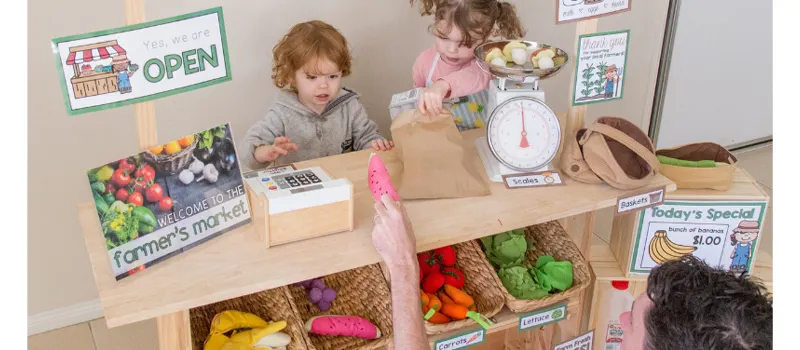
Recommended Toys:
- Magnetic tiles
- Wooden animal figurines
- Pretend kitchen tools
- Art and craft materials
- Small world play sets
For Early School Age (5–7 years)
Children at this age enjoy building things with more detail and solving challenges on their own. They begin to plan, test, and revise as part of their play. Open-ended toys support these thinking skills while allowing them to express ideas through projects that are both fun and meaningful.
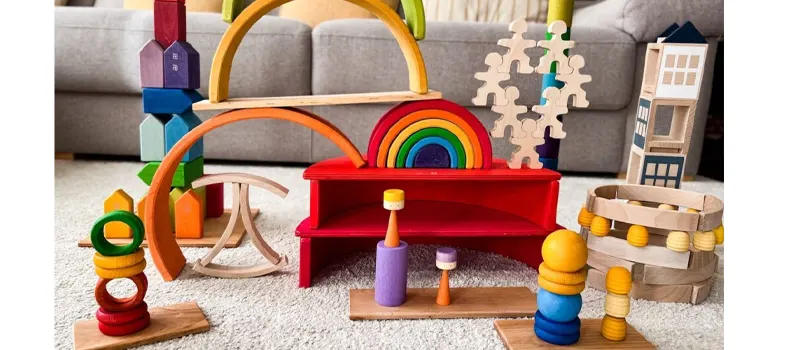
Recommended Toys:
- Pattern blocks
- Clay modeling kits
- STEM construction sets
- Recycled loose parts
- Musical instruments
Schlussfolgerung
Choosing open-ended toys is an investment in long-term learning and joyful discovery. They encourage children to take the lead, think flexibly, and play with purpose. If you are looking to build a thoughtful play environment that truly supports development, open-ended toys are a simple but powerful place to start.
Entdecken Sie unsere gesamte Produktpalette
Erhalten Sie Zugang zu unserem umfassenden Katalog mit hochwertigen Möbeln und Spielgeräten für Kindergärten und Schulen.

